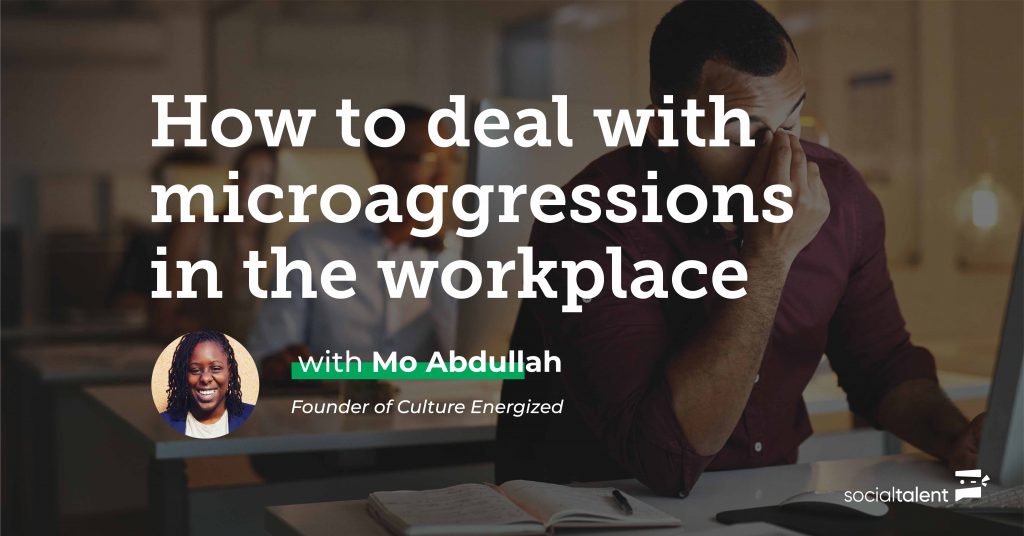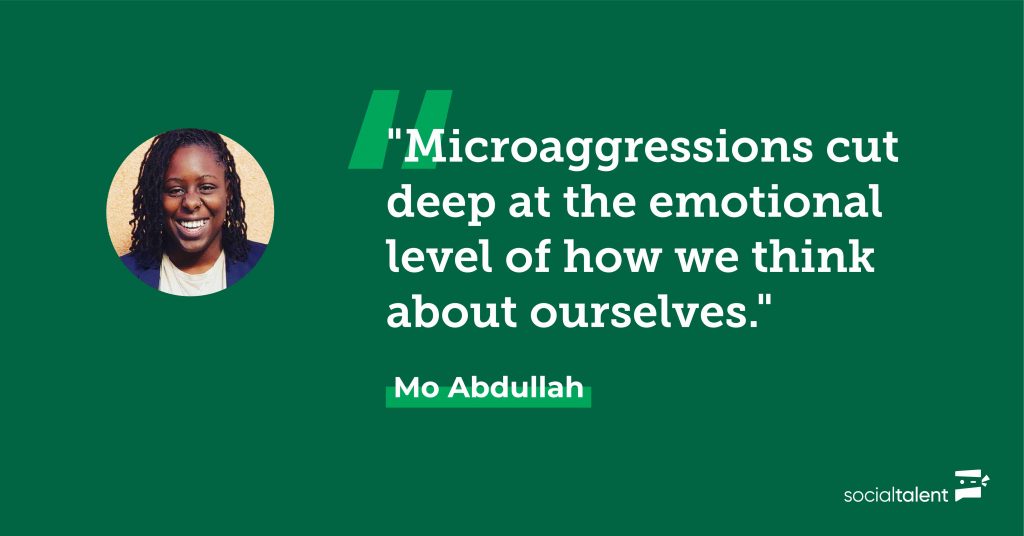How to deal with microaggressions in the workplace, with Mo Abdullah
Microaggressions are omnipresent in the workplace. We’ve all heard them, or even unintentionally said them – those seemingly innocuous comments that reflect assumptions about people based on some element of their identity. This form of discrimination can be so difficult to stamp out too. Often people, both at the giving and receiving end of microaggressions, aren’t even aware it’s happening. But targeted change is needed to address it.
We recently sat down with Mo Abdullah, the Founder and CEO of Culture Energized, to dig deeper into this topic. A respected expert in this field, Mo gave us greater insight into how microaggressions manifest, the tools needed to address them, and the role learning plays in building a safer, more inclusive environment.

What is a microaggression?
The term microaggression can be somewhat misleading, given its almost oxymoron-like construction. A recent HBR article even argued for the retirement or evolution of the phrase in favour of something that better encapsulates the severity of the issue. But Mo was able to break the definition down into three very clear parts:
- Microaggressions are everyday comments, behaviors and slights that occur through our socializations with other people.
- They can be intentional and unintentional, meaning that they’re essentially fed by our unconscious biases.
- Microaggressions have hidden messages of aggression, reinforcing a feeling of exclusion or stereotype.
While on the surface, a microaggression may seem less harmful than an instance of outright prejudice, it’s the cumulative impact of these that can be so damaging. The ‘micro’ part of the word refers more to the subtlety of the act, but as Mo states, “it doesn’t get at the impact, which is the most important part.” Microaggressions are like a death by a thousand cuts. Over time, they can have serious ramifications for mental health, engagement, and happiness.
How do microaggressions manifest in the workplace?
Microaggressions can crop up anywhere and in any social interaction. But one of the most prevalent areas where these behaviors unearth most is in the workplace. The ecosystem of an organization creates a near perfect breeding ground for microaggressions to manifest. Given the hierarchical systems, the melting pot of individuals, stress and varied nature of interaction, a workplace can become a minefield for these subtle acts of discrimination.
Let’s look at some common examples of verbal microaggressions:
- “You look really pretty for a transgender girl.”
- “Sorry, I can’t pronounce your name, can I call you X instead?”
- “I never would have thought you were gay.”
- “You’re a little young to lead this project.”
- “The way you’ve overcome your disability is so inspiring.”
And while these instances can flicker by with little notice for the person saying them, they can be immensely unpleasant and linger for the recipient. Especially when faced with them on a near constant basis. According to Mo, “microaggressions cut deep at the emotional level of how we think about ourselves.” Comments like these are often masked as compliments, but they only serve to other the recipient, make them feel different or something less. And it’s not just verbal either; innocuous actions can also have the same impact. Correcting someone’s grammar in an effort to shame them or confusing racialized co-workers only reinforces bias.

Want to learn more about language and diversity? Check out this blog post with Salma El-Wardany.
How do you deal with microaggressions in the workplace?
According to Mo, “it’s all about learning. When you know better, you can do better.” Microaggressions are felt on individual levels, and as we’re all made up of different identities and experiences, it’s so important to be open to feedback and growth. To start with, we have to acknowledge that microaggressions are difficult to eliminate, but we can minimize their occurrence and build a safer culture to deal with them. “We have to get everyone to recognize that we’re not just managing it for other people, we’re also managing it for ourselves.” We must hold ourselves accountable, but it can be a tricky task in a work setting. Luckily, Mo has some advice on this front!
- The role of leaders: Leaders set the tone, and often it’s not the right one. Proper training is needed to give leaders the skills to become more open and knowledgeable about microaggressions, rather than trying to shut these conversations down or gaslight.
- Policies: Have structures in place that can tackle issues when they arise. Indicate what kind of language is appropriate and have next steps already mapped out to deal with these situations.
- Check-in: Foster a culture where it becomes more comfortable to check-in with someone and hold yourself accountable if you feel like you have committed a microaggression. Create a space for healthy dialogue.
- Conflict resolution: We must build the skills to disagree well and work through situations. As Mo says: “we have to embrace conflict if we want to embrace diversity. It’s not going to always be kumbaya.”
- Inclusive language: Because a lot of microaggressions are verbal, learning and investing time in understanding inclusive language can be a great way to safeguard against this.
The final word
Microaggressions occur in the workplace daily. We are all guilty of them and we can all do better. And while there is no direct panacea for the problem, there are steps which can be taken to mitigate it. “Put your energy towards the skills needed to navigate microaggressions,” Mo told us, “and you’ll see a lot more progress.”
